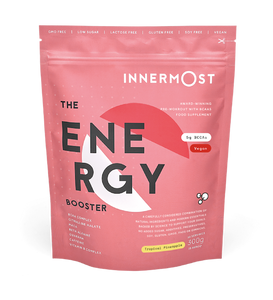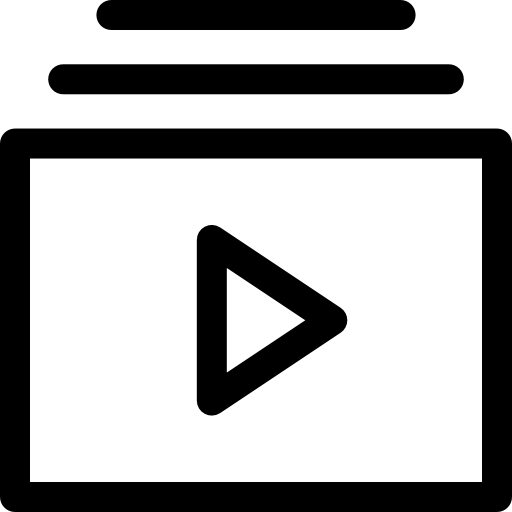Whether a seasoned gym addict, first-time fitness enthusiast, or avid water goer, there’s nothing quite like smashing your rowing PB. While it might look intimidating to begin, it’s much simpler, addictive, and most importantly, beneficial to your body than beginners might think.
Like any workout PB however, there can reach a point where your best time seems to plateau. After all, there are only so many times you can improve right? Well not necessarily.
In addition to a high protein diet and the use of fitness supplements like The Power Booster to aid performance, there are a wide range of exercises to try that can improve rowing endurance, power, and technique. By the end, getting a faster rowing PB should be a breeze.
The Benefits Of Rowing
Firstly, it’s important to ask; should you go for a PB in the first place? Short answer: absolutely!
Rowing offers a complete high-intensity exercise all without skipping a beat; just a single session will train 9 of your muscle groups and around 85% of your body’s muscles. Compared to other workouts, this builds strength and endurance within key muscles in the upper and lower body. While achieving that rowing PB can be tough, being able to endure the challenge and feel the muscle growth is an unmatched workout joy. The versatility of rowing means everyone from cardio lovers to arm day enthusiasts can look forward to smashing their next PB.
Rowing workouts are also low-impact and kind to your individual joints. This makes it the perfect PB challenge for those recovering from, and looking to avoid persistent injury - or perhaps even the dreaded shin splints. The exercise also provides mental benefits for the individual through the release of endorphins (the body’s feel-good hormones).
Exercises To Improve Your PB
So how do you go about improving your PB?
Well because rowing utilizes a complete range of muscles, getting a better time is all about targeting these individual parts of the body. This requires a mix of all types of workouts from cardio and core to strength training.
Cardio WorkoutsTo bring rowing performance to the next level, it’s almost essential to incorporate a strong aerobic focus into your exercise. Given the repetitive and continuous motions required with rowing, it’s easy to get stuck in the trap of pushing yourself too much – especially when it comes to striving for a PB. Cardio performance exercises are a fantastic method to build your rowing endurance, improve your heart health, and simply just lift your mood. For the best results, we’d recommend a mix of high-intensity interval training (HIIT) and steady-state cardio (SSC) workouts.
High-Intensity Interval TrainingHIIT exercises are all about raising the heart rate and building strength and stamina. They balance short but maximum-intensity workouts with rest intervals – think short sprints, fast cycling, and squat jumps. This makes HIIT an important tool to improve cardio capabilities and smash that rowing PB goal.
Steady State CardioSSC workouts on the other hand focus on continuous but long-term workouts. Instead of 2-minute short sprints of high intensity, you might take a light 30-minute jog for a consistent heart rate. These exercises have the benefit of improving your endurance levels and making it easier to continue rowing until hitting your distance target.
Strength Training
While debates continue to rage about whether rowing is a cardio exercise – we’re firmly of the it is camp – strength plays just as vital a role as endurance. Regardless of whether you row 500, 1000, 2000 metres, or beyond, there will always be a mental balance required between the rowing strength you exert per rep and the overall distance remaining. By improving key muscles through strength training, you can reduce the effort and difficulty on each row to improve speed and overall performance. Given the full body sequence of actions used in rowing, we’d recommend you focus your workout on 3 key areas: legs, core, and arms.
Leg ExercisesYour leg contains some of the strongest muscles in the body. Given its importance to strong rowing performance, it’s not exactly surprising that we’re recommending you incorporate leg exercises into your fitness routine. This is especially true at the rowing catch point - the end point of each row – where the greatest leg force is required. To improve leg muscle strength, we recommend simple but effective exercises like squats, lunges, and targeted deadlift sessions.
Core ExercisesWhile it might not be completely obvious, your core muscles – the stomach and lower back muscles - play a pivotal part in maintaining your posture and improving your rowing PB. They are especially important in supporting rowing form toward the end of the workout when you begin to tire. A strong core also minimises the workload on other muscles that would otherwise have to work harder to compensate for a weak core. Core workouts are also simple to do whether at home or the gym. Just some ideas include plants, hip bridges, and Pilate ab crunches.
Arm ExercisesArm strength also plays a significant role in maintaining rowing form, albeit slightly different depending on whether you’re at the gym or treading the waters. For water goers, the arms act as a messenger of sorts. They transfer the power generated from the leg and core muscles into the rowing oar and push the boat forward – a fairly important element to achieving any sort of distance. For the motivated gym goer, strong arms can provide well-defined concentric and eccentric muscle movements that benefit form.
To focus on improving arm muscle strength, there are plenty of exercises you to try. Just some effective choices are bicep curl and triceps extension workouts, but you can even try something as simple as home push-ups (which will also help in improving core strength).
The Importance Of Technique, Rest, And Recovery
With all this said, a key and often overlooked part of improving a rowing PB is simply getting the basics - effective form and technique before, during, and after any exercise – down.
Consider adding some simple and easy stretches before a session to effectively warm up your muscles and best prepare your body. Likewise, you could have all the endurance tools you need to succeed, but a poor rowing technique could see you waste unnecessary energy. Efficiency is key here. The other added benefit of good form is that it greatly reduces the chance of any injuries which let’s face it, is quite important to training and smashing the next PB.
As someone who has gone for a personal best on many occasions, I can agree that this last part can be the most difficult, but achieving a PB is all about planning rest and recovery days into your training. Listening to your body here can be crucial. Pushing too hard increases the risk of overtraining, potentially leading to injury. To this end, it can make it easier to think of recovery as another stage of the workout process. Remember, rest days don’t necessarily mean you have to do nothing all day. Gentle exercises like walks and even yoga can work wonders for body recovery.
Interested to discover more about Innermost Power Booster Supplements? Looking for the best ways to fuel your next workout? Perhaps you have some amazing and inspired ideas to share? Don’t hesitate to message us on our Instagram @liveinnermost.


















